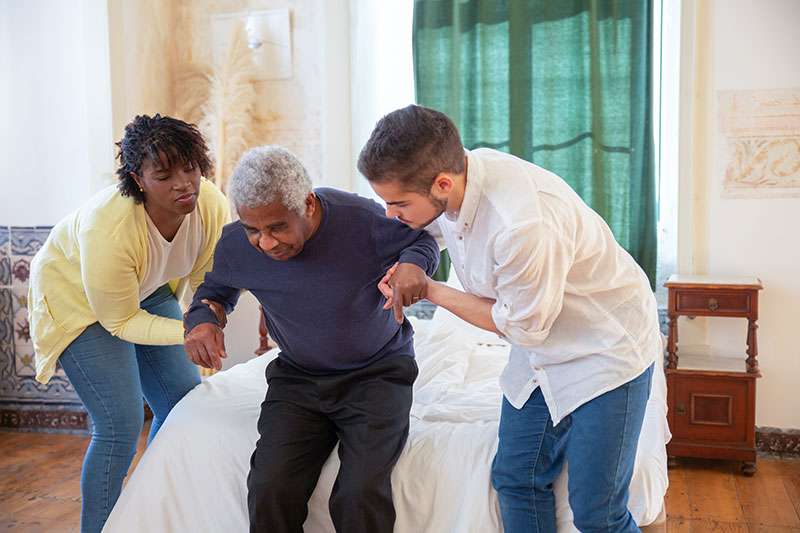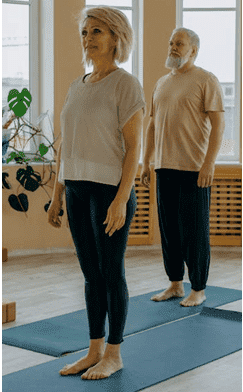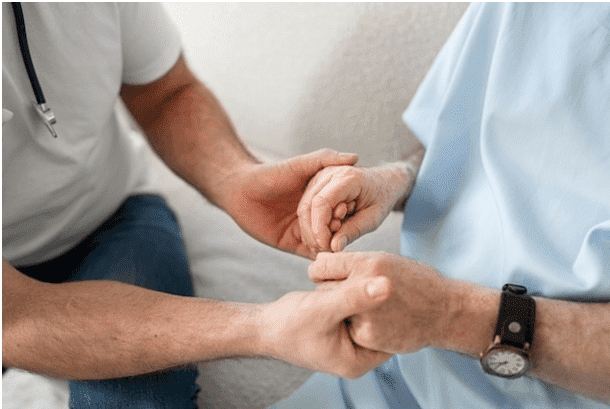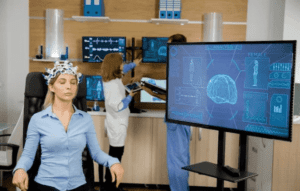Parkinson’s disease (PD) is a progressive neurodegenerative disorder affecting movement control. It arises due to the loss of dopamine-producing cells in the brain, leading to symptoms like tremors, rigidity, and slowed movement. Alongside motor symptoms, non-motor symptoms such as cognitive changes, depression, and sleep disturbances can also occur. Early diagnosis, proper medical management, and targeted therapies like Parkinson’s balance exercises can help improve the quality of life for individuals with this condition.
“Parkinson’s disease is a severe brain cell damage disorder,” explains Dr. Gurneet Singh Sawhney, often called the best neurosurgeon in Mumbai. “Balance challenges are a significant aspect of PD, making daily activities more difficult and limiting engagement in meaningful aspects of life.”
Dr. Sawhney is among the leading specialists for people seeking Parkinson’s Surgery in Mumbai.
Understanding Balance Challenges in Parkinson’s

Balance challenges in Parkinson’s disease stem from disrupted communication between the brain and muscles. The loss of dopamine-producing cells affects coordination and stability, leading to instability and reduced mobility, increasing the risk of falls. Everyday activities become daunting tasks. Fortunately, high-level balance exercises for Parkinson’s can be instrumental in addressing these challenges. These exercises focus on enhancing muscle strength, flexibility, and coordination, improving stability and confidence in movement.
“With consistent practice, individuals with Parkinson’s can navigate their daily lives with greater ease and improve their balance and mobility,” says Dr. Sawhney.
Is Parkinson’s affecting your stability?
Improve your mobility with Parkinson’s balance exercises guided by Dr. Gurneet Singh Sawhney, a renowned neurosurgeon in India.
Watch Dr. Gurneet Singh Sawhney’s Successful Management of Parkinson’s Disease Through DBS Surgery

Safe Balance Exercises for Parkinson’s and Their Benefits
In this section, we discuss some essential activities to improve balance in Parkinson’s disease. The highly skilled spine surgeon Dr. Gurneet Singh Sawhney frequently advises the following 7 balance exercises for Parkinson’s treatment in Mumbai:

1.Static Standing: Face a chair or table with your feet shoulder-width apart. Hold for 30 seconds. Then, stand with feet together, body upright. Hold for 30 seconds. Regular practice can improve confidence in maintaining a steady stance during daily activities.
2. Tandem Walk: Place one foot in front of the other, maintain an upright posture, focus forward, and hold for 30 seconds. Switch feet by placing the other foot in front, and keep the stance for 30 seconds. This exercise challenges and promotes balance and coordination.
3. Lateral Weight Shift: Begin with feet apart. Gently shift your weight to the right side for 3 seconds without moving your feet. Return to the starting position and repeat on the left side. Gently shifting weight from side to side without taking steps helps strengthen the muscles used for balance.
4. Single-Leg Stands: Stand with your hands supported by a wall or a bar. Lift one leg and hold the position for a few seconds. Switch legs and repeat. This exercise helps improve leg strength and balance.

5. Seated Marching: While seated with your back straight, lift your knees alternately, mimicking a marching motion. This seated exercise enhances coordination and engages the core muscles.
6. Side-Stepping: Begin by stepping sideways with one leg, then the other. Sidewalk for 10 steps. Repeat in the opposite direction for balance enhancement.
7. Figure of Eight Walking Exercise: Arrange two objects 2 meters apart. Walk in a figure-eight pattern and repeat this sequence 10 times. This exercise focuses on balance and is beneficial for Parkinson’s management.
“These exercises are tailored to the unique needs of Parkinson’s patients”, advises Dr. Gurneet Sawhney. “They help Parkinson’s patients to navigate life with greater ease and reduced apprehension.”
With an overall expertise of 18+ years, Dr. Sawhney is the go-to specialist for neurosurgery in Thane.
Medical Interventions
Medical interventions to improve balance in Parkinson’s often involve a combination of medications, physical therapies, and specialized treatments. Some of the key medical intervention approaches include:
 Medications:
Medications:
Neurologists may prescribe specific medications that help manage the motor symptoms of Parkinson’s, including those that impact balance and coordination.
Physical Therapy:
Physical therapists design and supervise tailored exercise programs focusing on balance, gait, and posture. These exercises aim to enhance muscle strength, flexibility, and overall stability.
Occupational Therapy:
Occupational therapists address daily tasks and activities, suggesting adaptive strategies and techniques to maintain balance and prevent falls.
Deep Brain Stimulation (DBS):
For some advanced cases, DBS surgery involves implanting electrodes in specific brain areas. This technique can help regulate movement and balance-related symptoms.
Cueing Techniques:
Healthcare professionals can engage patients in specific cueing techniques, like rhythmic auditory or visual cues, to help individuals improve their balance and coordination.
Virtual Reality (VR) Therapy:
VR-based balance training can simulate real-life situations to challenge and improve balance abilities.
Medication Adjustment:
Fine-tuning medication regimens with a healthcare provider can alleviate symptoms impacting balance.
“Furthermore, loved ones can help reduce fall risks by implementing modifications at home, such as removing clutter and installing handrails,” adds brain and spine expert Dr. Gurneet Singh Sawhney.
Improvements after Practicing Parkinson’s Balance Exercises

Following are the remarkable improvements that can arise from committing to these exercises:
- Enhanced stability and reduced fall risk through improved muscle strength and coordination.
- Better gait and smoother transitions between steps.
- Increased confidence in daily activities and reduced fear of falling.
- Improved posture and reduced strain on muscles and joints.
- Enhanced coordination and control of movements.
- Potential symptom management and overall better quality of life.
- Customized exercise plans can lead to significant improvements with consistent practice.
Each individual’s condition is unique. Please consult a qualified movement disorder specialist like Dr. Gurneet Singh Sawhney to determine the most suitable interventions for your specific needs.
Conclusion
In the journey of battling Parkinson’s, each step is a testament to your strength and resilience. The challenges this condition presents are not just physical but emotional as well. However, amidst these trials, there’s hope shining through.

Dr. Gurneet Sawhney and his expertise are a guiding light, offering holistic care and innovative solutions. Embracing Parkinson’s balance exercises becomes a powerful stride towards regaining control, enhancing the quality of life, and fostering an unwavering spirit. As you step onto the path of balance exercises, every movement is a testament to your determination to rise above the obstacles.
If you or a loved one is living with a mobility disorder, please reach out to Dr. Sawhney for his expert guidance and treatment options to master balance and regain stability.
Remember – with each balance achieved, you affirm your commitment to a life of greater stability, strength, and hope.
FAQ
Is Parkinson’s disease hereditary?
Parkinson’s disease can have a genetic component, but it’s not always hereditary.
How is Parkinson’s disease diagnosed?
Diagnosis of Parkinson’s involves clinical evaluation, medical history, and sometimes imaging tests.
Is there a cure for Parkinson’s disease?
There is currently no known cure for Parkinson’s disease, but treatments aim to manage symptoms and improve quality of life

 Medications:
Medications: